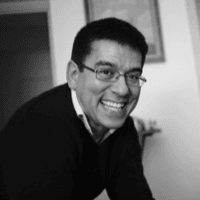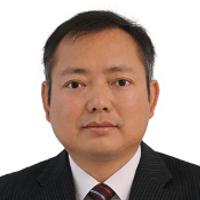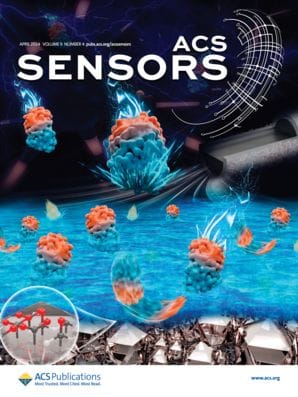ACS Sensors, Analytical Chemistry, Journal of Proteome Research, and the ACS Division of Analytical Chemistry are excited to announce the winners of the 2020 Advances in Measurement Science Lectureship Award: The Americas: Jennifer S. Brodbelt, University of Texas at Austin Europe/Middle East/Africa: Andrew deMello, ETH Zurich Asia-Pacific: Dr. Zhen Liu, Nanjing University These awards honor […]

ACS Sensors, Analytical Chemistry, Journal of Proteome Research, and the ACS Division of Analytical Chemistry are excited to announce the winners of the 2020 Advances in Measurement Science Lectureship Award:
The Americas: Jennifer S. Brodbelt, University of Texas at Austin
Europe/Middle East/Africa: Andrew deMello, ETH Zurich
Asia-Pacific: Dr. Zhen Liu, Nanjing University
These awards honor the contributions of three individuals from three major geographic regions – the Americas, Europe/ Middle East/Africa, and Asia-Pacific – who have made a major recent impact in the field of measurement science. Winners are selected based on their lecture abstracts and their research output during the past five years. While each of the award winners has different backgrounds and countries of origin, they all have contributed significantly to measurement science.
Advances in Measurement Science Lectureship Symposium at Pittcon 2020
The 3rd annual Advances in Measurement Science Lectureship Awards will be presented in a dedicated symposium at Pittcon 2020 in Chicago, Illinois, from March 1st-March 5th.
At this time, award recipients will be presented with a plaque and have the opportunity to speak. Recipients will also receive $3,000 in total to cover travel and other expenses.
Get to Know the 2020 Award Recipients
Below are three brief interviews with the winners regarding their research and their thoughts on the latest in measurement science.
Dr. Jenny Brodbelt

Dr. Jenny Brodbelt is the Rowland Pettit Centennial Professor of Chemistry and Chairperson at the University of Texas at Austin. Her research focuses on the development of photodissociation mass spectrometry for the characterization of biological molecules. She serves as an Associate Editor for the Journal of the American Society for Mass Spectrometry.
“Jennifer Brodbelt has made important advances in the use of laser photodissociation of peptides and proteins for sequence analysis by mass spectrometry. An important component for the mass spectrometry analysis of large ions is the ability to break bonds in the gas phase to facilitate sequencing. Professor Brodbelt’s pioneering studies of the use of UVPD to fragment large proteins have advanced the analysis of intact proteins. Her lecture at Pittcon next march will be enlightening,” says John Yates, Editor-in-Chief of Journal of Proteome Research.
Here’s what she had to say about the field and her research:
What do you consider to be the most important advancement in measurement science in the past five years?
Perhaps not strictly only in the past five years, but certainly continuing in the past five years has been the growing availability of high resolution/high mass accuracy mass spectrometry platforms, particularly ones with new bells and whistles like various types of ion mobility capabilities and ion activation modes. This has increased the accessibility of high-performance mass spectrometry to non-experts, and it has inspired many new collaborations that have spanned various disciplines.
What advances has your lab made in the past five years?
My research group has mainly focused on expanding the strategies and applications that use ultraviolet photodissociation (UVPD) as a new ion activation method. In essence, we view UVPD as an extremely versatile and powerful approach for tandem mass spectrometry, so we have been exploring the analytical capabilities of UVPD for the characterization of many classes of biological molecules, ranging from peptides to proteins to lipids to nucleic acids and others. At the same time, we have been developing ways to improve the signal-to-noise ratio of UVPD spectra, and that gives us many opportunities to emphasize both analytical performance and analytical applications.
What’s next in your research?
We would like to utilize UVPD to characterize every type of molecule within a supramolecular assembly, include proteins, nucleic acids, and lipids, starting with the intact supramolecular assembly and dissecting it one piece at a time.
What measurement science problem are you hoping to see get solved in the next decade?
A big challenge that we face in my group is related to my previous response but with respect to separations. We are becoming fairly competent at ionization and analysis of supramolecular assemblies by mass spectrometry, as evidenced by the great advances from established research groups like Albert Heck’s, Carol Robinson’s, Vicki Wysocki’s, and other newer groups, but the big hurdle is enabling separation methods that can handle complex mixtures of supramolecular assemblies. This remains a tremendous challenge.
Andrew deMello

Andrew deMello has been a Professor of Biochemical Engineering in the Department of Chemistry and Applied Biosciences at ETH Zurich since 2011. His research group is engaged in a broad range of activities in the general area of microfluidics and nanoscale science.
“We are delighted to have Andrew as one of our award winners as his work in microfluidics has had a major impact on, not just sensing, but measurement science as a whole. Some of his latest work, which we will hear about at Pittcon, is incredibly exciting,” said J.Justin Gooding, Editor-in-Chief of ACS Sensors.
Here’s what he had to say about the field and his research:
What do you consider to be the most important advancement in measurement science in the past five years?
That’s a difficult first question! There have been so many outstanding advances in measurement science in recent years. However, if you were to press me, I would say that the impact of super-resolution microscopies in visualizing the sub-cellular organization and dynamic processes has been quite remarkable.
What advances has your lab made in the past five years?
Much of our work has focused on the development of microfluidic tools for high-throughput experimentation and the establishment of high sensitivity optical detection methods for use in small-volume environments. A key aspect of the former activity has been the use of droplet-based microfluidic tools to perform a variety of complex chemical and biological experiments. In the latter, we have spent much effort in developing high-content detection techniques. Highlights include, novel photothermal spectroscopies for ultra-sensitive absorption measurements (at sub nM concentrations and in fL volumes) and the development of multi-parametric imaging flow cytometry, which allows for high-resolution imaging of single cells at unprecedented throughputs.
What’s next in your research?
A key focus of our activities in the short-medium term will be the development of robust platforms for ultra-high-throughput imaging flow cytometry, our goal being to realize diffraction-limited 3D imaging of cells at unprecedented throughputs. By combining smart microfluidic concepts with multi-parametric detection schemes and machine learning, we hope to fulfill the unmet demand for both speed and throughput in a wide range of single-cell and diagnostic applications. In addition, we are beginning to develop tools for the efficient characterization of circulating biomarkers within biofluids. In this respect, small extracellular vesicles, with characteristic dimensions below 100 nm are especially interesting. Such species are known to circulate within a variety of biofluids, with protein, DNA and RNA profiles that are modulated during cancer progression and therapy.
What measurement science problem are you hoping to see get solved in the next decade?
Recent years have seen incredible advances in a wide variety of analytical tools for use in experimental science. I think it’s fair to say that we (the community) are now extremely good at generating high-quality chemical and biological information on very short time scales. That said, often we do a very bad job of extracting this information at the same rate and with the same richness or contrast. So, I’d really like to see smart solutions in this direction. Can we create ultra-sensitive, fast and information-rich detectors able to probe a diversity of molecular species at sub-nM concentrations? Let’s wait and see.
Dr. Zhen Liu

Dr. Zhen Liu is a Distinguished Professor at Nanjing University, China. His main research interest is to develop affinity recognition materials and reagents for separation, disease diagnosis, single cell analysis, and cancer therapy. He was awarded the National Science Fund for Distinguished Young Scholars in 2014.
“Zhen Liu has created a number of innovative advances to measurement science, including novel molecularly imprinted polymers and a diverse set of bioassays. Recent research has improved cancer diagnostics and characterized low copy number proteins in individual cells. I look forward to learning about his latest advances at Pittcon next March,” said Jonathan V. Sweedler, Editor-in-Chief of Analytical Chemistry.
Here’s what he had to say about the field and his research:
What do you consider to be the most important advancement in measurement science in the past five years?
This is really hard to answer because so many significant advances have been made in so many aspects of measurement science. However, I personally believe the DNA microscopy is on the top of the most exciting advances.
What advances has your lab made in the past five years?
In the past five years, my lab has made significant progress in two aspects: 1) the development of molecularly imprinted polymers (MIPs), a kind of antibody mimics; and 2) innovative bioassays. Molecular imprinting has been an important methodology to create artificial receptors to recognize specific compounds or species. However, it still remains challenging to facilely prepare high-performance MIPs. My team has developed several facile and versatile imprinting approaches that allow for efficient preparation of MIPs specific to certain biomolecules, particularly proteins, peptides, glycans, and monosaccharides. The obtained MIPs exhibited excellent binding properties, stability, and reusability, allowing for a large range of promising measurement science applications, such as disease diagnosis, cancer cell recognition and cell/tissue imaging. It is noteworthy that such MIPs exhibited great potential in cancer therapy. For example, via blocking a cancer growth-related signaling pathway such as the human epidermal growth factor receptor-2 (HER2) signaling pathway, inhibition of HER2-positive cancer growth was realized. On the other hand, by combining our MIPs and other affinity reagents (such as aptamers and antibodies) with plasmon-enhanced Raman spectroscopy (PERS), we have developed a specific, ultrasensitive sensitive, and fast method called plasmonic immuno-sandwich assay (PISA), which enabled not only facile probing and quantitation of low-copy-number proteins (< 1,000 copies per cell) in single living cells and living animals but also fast quantitative measurement of trace disease biomarkers in human serum and urine. This approach opened new opportunities for a range of promising applications such as disease diagnosis, rare cell-based diagnosis/prognosis, personalized drug screening, and single-cell signaling pathway research.
What’s next in your research?
We are going to move forward in two aspects. On one hand, we are trying to improve the binding properties of MIPs, hoping to approach those of monoclonal antibodies, as well as to create MIPs with properties that antibodies fail to provide. On the other hand, we are going to explore more applications of our MIPs and bioassays in precision diagnostics, cell biology, and nanomedicine.
What measurement science problem are you hoping to see get solved in the next decade?
One measurement science problem that I hope to see get solved is to detect and monitor the chemical process of biological events at the subcellular resolution and the single-molecule level. Besides, I hope to see big questions, such as the origin of life, getting solved or partially solved due to advances in measurement science.
